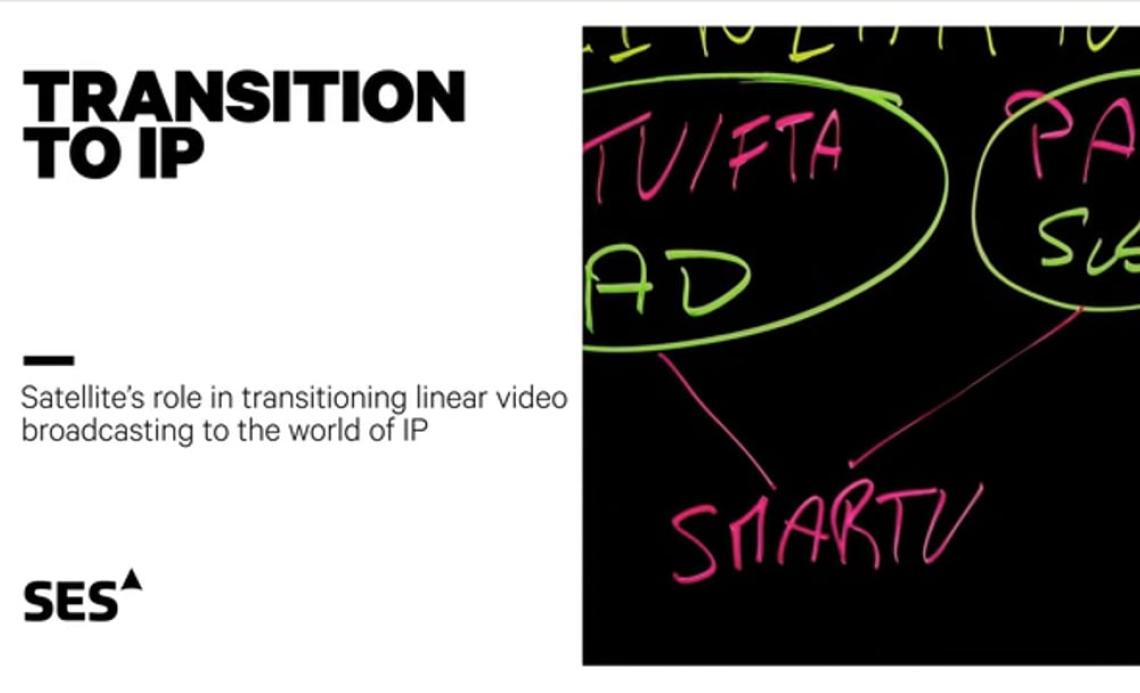
Supporting Broadcast's Transition to IP
For over 45 years, the satellite industry has helped broadcasters extend their reach to billions of households. It is a leading method for delivering entertainment and information to communities all over the world, regardless of geography, terrain or infrastructure.
We have guided our customers through change: from analogue to digital, SD to UHD, and linear to video-on-demand. Along the way, we have shouldered the heavy lifting and evolving complexities of broadcast delivery so they can focus on what they do best - creating or securing rights and promoting their audience-winning programming.
As broadcasters increasingly transition to IP delivery, our mission is no different. Learn how satellite providers are innovating to make it easier and cheaper to deliver high-quality content to any device, anywhere, at any time.

The rise of the screens - satellite's role
In 15 short years, streaming has transformed viewing your favourite show from a scheduled appointment to an anytime, anywhere activity. The number of screens in our homes has exploded from a single television to a collection of Smart TVs, phones, tablets and laptops.
Audience attention is spread across traditional television, streaming platforms, social media, and online gaming, and advertisers and subscribers have more choice than ever as to where to spend their money.
While our industry is innovating to help broadcasters overcome these challenges, satellite’s core benefits to broadcasters remain as relevant as ever.
Delivering content via satellite
Yvonne Bertalot, SES Director of Product Management for Media, explains how the satellite industry is helping broadcasters expand addressable advertising audiences.

The monetisation problem
Once, free-to-air broadcasters could rely on prime-time ad breaks for revenue. Now, high-budget dramas compete with the latest viral YouTube clip for audience attention.
Monetising content is more important than ever through ad-supported free-to-view services, pay TV or public broadcasting funding. All models rely on reaching the largest audience possible, which is where satellite steps in – SES alone helps media companies reach over one billion people.
Further, the industry has developed methods to help advertisers target audiences in selected markets.


Developing a hybrid future
Satellite and IP delivery each have unique strengths. Combined, they offer broadcasters the opportunity to offer audiences a seamless viewing experience.
A hybrid system also benefits the bottom line, allowing broadcasters to optimise their delivery model as audience numbers grow.
Unifying two distinct platforms is complex, and operators like SES are collaborating with industry partners to deliver the best of both worlds.

Finding the cost sweet spot
While satellite broadcast networks have higher startup costs than IP, adding users is minimally expensive, making them highly scalable.
In contrast, the entry cost of a Content Delivery Network (CDN), the technology used by streamers to distribute content, is low but increases with reach.
DVB-NIP makes a hybrid distribution model possible, giving broadcasters the option to switch distribution methods at the critical tipping point when CDN becomes too expensive or does not meet picture quality requirements.

Defining the future viewing experience
A new hybrid model of delivery will give your viewers access to live TV and on-demand content through a single user interface, whether on a television, tablet or smartphone.
A single guide will combine live TV with streaming and deliver their favourite shows without network outages and poor connectivity.
Our journey to this technology continues, and, as always, we will take you with us.
